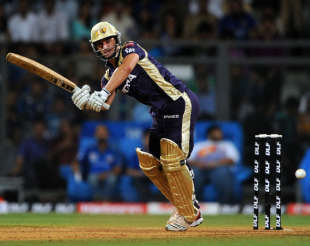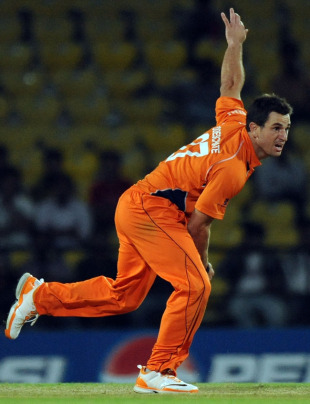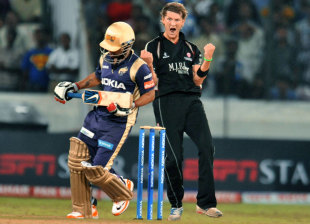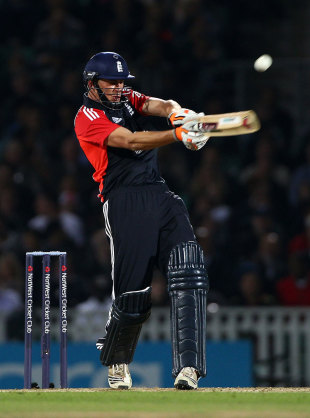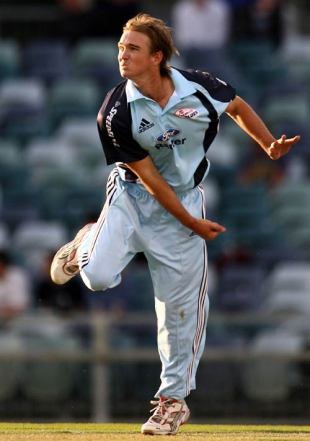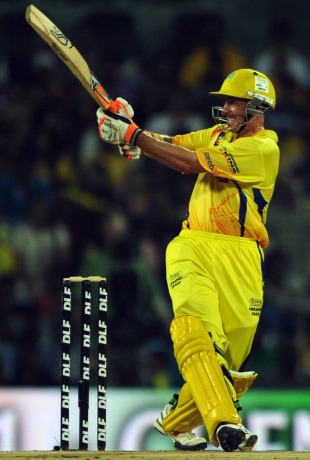
England cricket shirts are a powerful thing at the moment.
So long as you're wearing one, you're likely to be doing rather well. It doesn't seem to matter who your opposition is, or who your team-mates are.
Despite sweeping changes ahead of the matches against the West Indies, the dominant result was all very familiar.
Some in the press have suggested it would be better renaming these two T20s the 'Contractual Obligation Series', given the circumstances.
The ECB had to stage these games because of a deal struck on the basis of the Stanford triangular tournament, which disappeared along with its patron.
With more shoehorning required than the time Chris Tremlett thought it might be fun to try on Ian Bell's spikes, it would be easy to write off the games as more evidence of cricket's crazy scheduling.
What England seem to have learned, however, is that there is something to be gained from every match - hence a fresh-looking side to face an equally unfamiliar West Indies.
Nkrumah Bonner? Christopher Barnwell? Danza (and Cowers promises he isn't making this up) Pacino Hyatt? Then again, how many people will have been watching the development of Alex Hales from the beaches of Barbados? Mind you, you had to credit the crowd - 19,000 fans defied cricket fatigue from a long and one-sided summer to lend some vociferous support to England.
The reality for both sides is that the T20 World Cup is less than a year away, and both sides have a handful of games left to fine-tune their campaigns - something that stand-in skipper Graeme Swann touched on in the build-up.
"I think most people in the changing room thought the same thing when these games were plonked in front of us midway through the season," said Swann," but when you actually look at it and the scheduling before the World Twenty20 they are important."
Swann has come a long way since he played in the ill-fated Twenty20 for $20m game in 2008, a desperate and hopefully never-to-be-repeated contest before which the off-spinner talked about splurging his winnings on a pink Ferrari.
Give him a choice between a luminous sports car and a captain's armband, though, and Swann would surely choose the latter.
Granted, he couldn't remember that Jonny Bairstow was in the team at the toss, but it didn't matter. He remembered Ravi Bopara was a bowling option, and was rewarded handsomely.
And meanwhile the West Indies forgot any basics they had been working on in the build-up to this series.
The ball slipped through the fielders' hands all too often, while several bowlers sent down front-foot no-balls as if they thought the free hit might be a good thing. As spinners, Bonner (twice) and Devendra Bishoo were especially culpable.
"We'll do some fielding practice," West Indies skipper Darren Sammy reportedly said afterwards, before laughing with one of the team's media men.
You can be sure England will be doing their drills, though. Ben Stokes and Jos Buttler were denied an opportunity to make an impression with the bat, but both were responsible for top-class run-outs.
Taking a relaxed approach to fielding is as sure a sign as any that a team is going nowhere fast. India proved that repeatedly over four Tests and six limited-over clashes.
At least we finally discovered some value for India's visit to England's shores - their sloppy summer of cricket was the ideal preparation for taking on a ragtag Caribbean outfit.
"Men against boys," concluded Nasser Hussain at the end of the contest. But that wasn't strictly true - it was boys against boys, with Swann the only Englishman older than 26.
The future's bright, especially if England can keep up the hard work when their opponents slip up on theirs.
USER COMMENT OF THE DAY: "I heard the fat lady has left her dressing room and is standing in the wings" - Merv in Germany called it early, and called it right.
TWEET OF THE DAY: "England 10wicket Win...Kiss Teeth!!!!!! Sighhhhh!! Not lying I Vex Baddddddd!!!!!!!" Not exactly sure of the specifics, but somewhere in amongst those words Chris Gayle is a bit vexed to be in India, watching his team get pounded (after his own Bangalore Royal Challengers suffered a heartbreaker of their own in the Champions League T20).
STAT OF THE DAY: 3.4-0-10-4 - Ravi Bopara posts the best figures by an Englishman in T20 internationals.
SNAP OF THE DAY: Is Bopara so surprised by his figures that he's re-reading them on The Oval scoreboard? Or is Swann trying to protect him from seeing a highlights reel of the 2009 Ashes before the Essex man loses his mojo?
